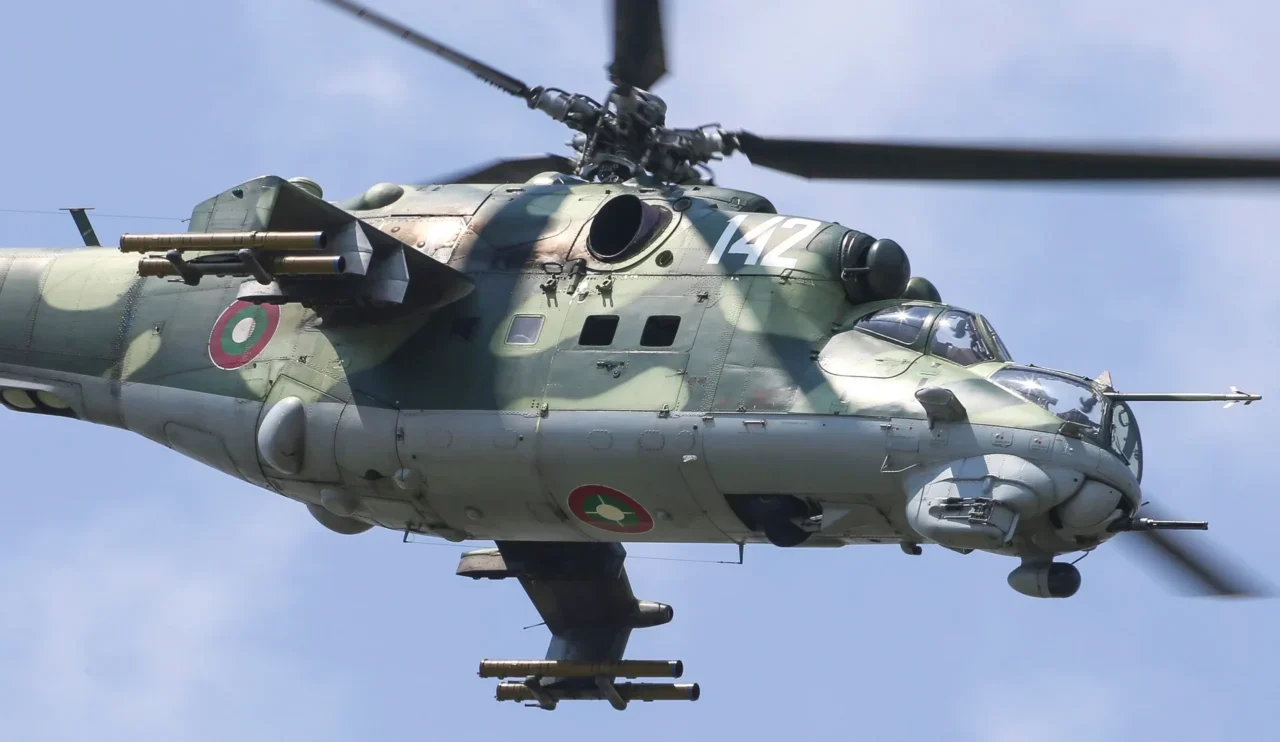Few pieces of military tech conjure the Soviet Union like the Mil Mi-24 “Hind.” The distinctive Hind helicopter gunship is featured prominently in Hollywood Cinema, and is consistently depicted as the vessel of the “bad guys.” Charlie Wilson’s War, Rambo: First Blood II, Rambo III, Air Force One, Blood Diamond, and of course, Red Dawn – all highlight the Mi-24 (or something similar) as the mechanical embodiment of evil.
And today, as Russian forces conduct a deeply unpopular invasion against Ukraine, images of Russian Mi-24 in action are surfacing – so again, the Mi-24 is becoming fully re-associated with evil.
Propelling an Idea to Flight
In the 1960s, Soviet engineer Mikhail Mil recognized the need for a flying vehicle that could provide both fire support and infantry transport. When Mil brought his idea, a mock-up of what would become the Mi-24, to Soviet officers, the reactions were mixed and the helicopter mock-up was disregarded. Stubbornly, Mil lobbied to promote his idea, eventually convincing a defense minister to convene an expert panel to reconsider the attack/transport helicopter. Mil’s bid worked; ultimately, the U.S. Army’s use of helicopters in Vietnam swayed the panel, and Mil’s team moved forward with the Mi-24 Hind.
Testing commenced in 1970 and lasted 18 months. The design was continuously tweaked to address a bevy of initial problems, including structural deficiencies, fatigue problems, and high levels of vibration. Also, early prototypes of the Mi-24 had a tendency to Dutch roll at speeds over 124 miles per hour – a Dutch Roll is a “tail-wag” or yawing motion. To correct the Dutch roll, a 12-degree anhedral angle was built into the wings, plus the missile pylons were moved away from the fuselage, outward onto the wingtips. The tail rotor was tweaked, too. Initially, the tail rotor was on the right side of the helicopter, rotating downward away from the primary rotor.
For the final build, however, the tail rotor was moved to the left side, rotating upward into the downwash of the primary rotor, which increased the Hind’s overall efficiency. With all the necessary tweaks made, flight testing ceased, and the finished Mi-24 – a likeness of which stalks the skies in Rambo and Red Dawn – was accepted into the Soviet armed forces arsenal.
Hind Takes to the Skies
The Mi-24 was designed to be fast. The streamlined fuselage is fitted with a retractable tricycle undercarriage landing gear. Whereas most helicopters fly with their landing gears extended, the Hind scoops its landing gear up into the fuselage, to reduce drag in flight. The two Isotov TV3-117 turboshaft engines can carry the Mi-24 at a max speed of 208 miles per hour within a service ceiling of 16,100 feet.
With a crew of two or three, the Hind can carry up to eight troops within its 57-foot fuselage. Empty, the Hind weighs over nine tons and has a maximum takeoff weight of 26,455 pounds.
In use with Soviet/Russian forces for over five decades, and exported around the globe, everywhere from Brazil to Algeria to Yemen to India, the Mi-24 has been deployed in perpetuity. But no conflict is the Mi-24 more closely associated than with Russia’s invasion of Afghanistan.
The Mi-24 was operated extensively against the Mujahideen; a declassified CIA report suggests that as many as 120 Mi-24s were used in Afghanistan. When the CIA began supplying Stinger missiles to the Mujahideen, the massive Mi-24 became a favorite target. CIA weapons support of the Mujahideen, and their subsequent targeting of Mi-24 with heat-seeking Stingers, is well documented in the somewhat vanilla Charlie Wilson’s War. Indeed, no machine conjures Western fears of the Soviets/Russians like the Mi-24 Hind.
Harrison Kass is a Senior Defense Editor at 19FortyFive. An attorney, pilot, guitarist, and minor pro hockey player, he joined the US Air Force as a Pilot Trainee but was medically discharged. Harrison has degrees from Lake Forest College, the University of Oregon, and New York University. He lives in Oregon and regularly listens to Dokken.

